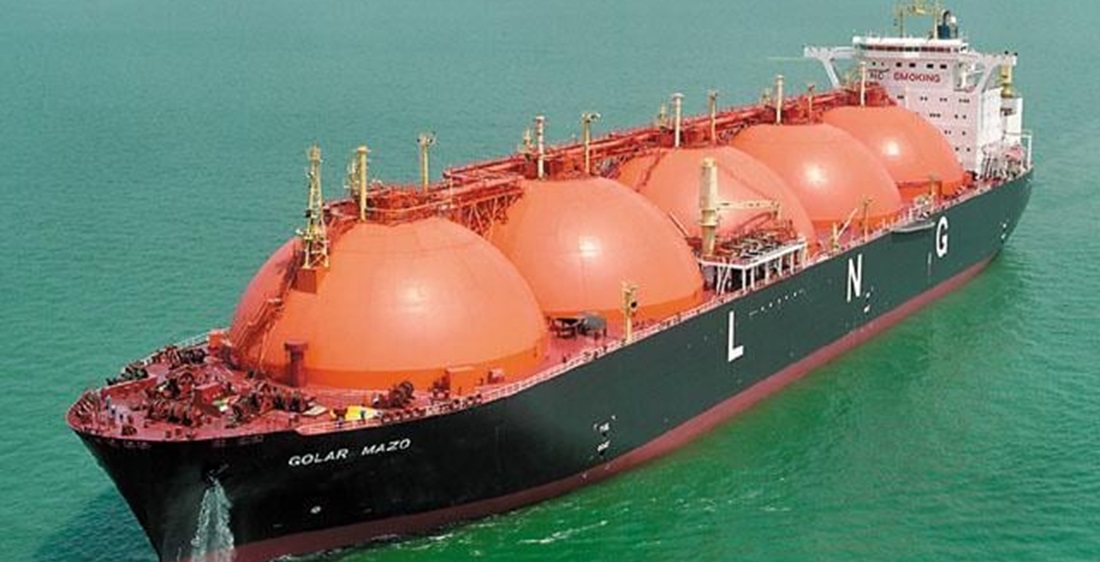
Friend or foe: is Santos infamous ‘bomb ship’ a threat?
Mar, 01, 2024 Posted by Gabriel MalheirosWeek 202409
The first step towards the commencement of operations at a liquefied natural gas (LNG) regasification terminal in the Port of Santos, following clearance by the Superior Court of Justice (STJ), was taken on February 29th morning with the arrival of the tanker vessel Höegh Giant, which came from Trinidad and Tobago.
The STJ ruled against a request made by the Public Prosecutor’s Office of São Paulo (MPSP) for the annulment of licenses and authorizations issued to the project. The MPSP cited potential environmental damage and risks to the neighboring population in case of accidents. Prosecutors referred to the operation as a “bomb ship,” sparking controversy in the Baixada Santista.
The Floating Storage Regasification Unit (FSRU) has a total length of 294 meters and a width of 46.04 meters. The operating area is near Alemoa, outside the so-called Organized Port. The São Paulo Regasification Terminal (TRSP) will be run by the company Compass/Cosan.
According to the company’s website, the licensed capacity of the terminal is 14 million cubic meters per day, with storage of 150,000 cubic meters of gas.
The company stated in an interview in 2018 that the LNG receiving and storage system would be located near Largo do Canéu, close to Ilha dos Bagres. The gas would be transported through a partially submerged pipeline, with a length of eight kilometers to Cubatão. The projected investment at the time was R$ 354 million.
Safety
The operation of the regasification terminal was assessed by the Brazilian Navy, which, in January, issued some guidelines to be followed by TRSP, which include the maximum size of the ships allowed at the terminal. The dimensions of FSRU vessels are 295 meters long, 47 meters wide, and have a draft of 12.5 meters. The liquefied natural gas carrier (LNGC) measures 300 meters long, and 52 meters wide, and has a draft of 12.5 meters.
In addition, the first docking/undocking maneuver must be carried out during daylight hours with at least four 60-ton tugboats, two pilot advisors, and the suspension of the ferry crossing service.
Monitoring
One of the agencies responsible for issuing licenses allowing the operation of the Regasification Terminal in the Port of Santos, the Environmental Company of the State of São Paulo (Cetesb), guarantees that “potential adverse effects associated with the implementation and operation of the project were analyzed and measures to avoid, minimize, or compensate for negative impacts were implemented to preserve environmental quality in the Santos estuary.”
The company also states that it is responsible for ensuring that the requirements, plans, and environmental programs specified during licensing are met.
“It is part of the list of requirements to be met by TRSP: effluent and waste management, monitoring of water quality, fauna (terrestrial and aquatic), and fishery resources, among others,” reported the São Paulo state-owned company.
Gains and Risks
Heloisa Borges Bastos Esteves, Director of Petroleum, Gas, and Biofuels Studies at the Energy Research Company (EPE), linked to the Ministry of Mines and Energy, states that a gas terminal boosts the region’s development. “Even in regions with enough supply, LNG provides additional capacity, complementing volumes. This increase, besides enhancing job creation, attracts other assets, such as industries.”
Ammonium Nitrate Raises Concerns
Another type of concern for communities around the port area is ammonium nitrate. Vessels carrying the product have also been referred to as “bomb ships.”
However, despite being widely used in fertilizer production, the substance has not caused any accidents in recent years, according to the Santos Port Authority (APS). Operations with this type of product have been ongoing since the 1970s.
According to the APS, ammonium nitrate is offloaded at the port’s Right Bank in Santos, at a public quay, being unloaded directly from the ship into trucks that transport it out of the Port. On the Left Bank, storage occurs at the Guarujá Maritime Terminal (Termag).
The ammonium nitrate handled is Class 5 (oxidizer), intended for agricultural use. By itself, it is not flammable or explosive – a combination of risk factors is required to cause an accident, such as confinement, the presence of flammable products in the same location, and high temperature, among others.
Throughput and Safety Issues
APS data shows about 900,000 tonnes of ammonium nitrate were unloaded in Santos last year. Considering January 2024 alone, the number goes to 41,000 tonnes.
To ensure safety, according to APS, operators act using a funnel and emergency response kit, in an operation overseen by the APS Operations and Occupational Safety/Environmental teams.
On the Left Bank, the terminal has Cetesb approval and adheres to the Army’s technical storage guidelines.
Port Authority
The president of the Santos Port Authority (APS), Anderson Pomini, emphasizes that all relevant regulatory agencies have issued licenses for the LNG terminal. “This type of cargo operation happens all over the world, at maximum safety. In Japan, for example, it is conventional. Why call it a bomb ship? I’m not a chemist, but from what I’ve studied, the possibility of these ships exploding is zero.”
Pomini recalled that the terminal is not within the polygon of the Port of Santos, but it passes through the quay, which is why APS is interested in the topic. “If all environmental control agencies, which are very strict, have issued licenses, the Justice has deliberated on the subject, and operating the cargo is necessary for Brazilian interests, I trust these institutions.”
Source: A Tribuna
Click here to read the original news text: https://www.atribuna.com.br/noticias/portomar/navio-bomba-chega-a-santos-veja-se-ele-realmente-oferece-risco
-
Meat
Mar, 06, 2025
0
United States climbs to third place in ranking of destinations for Paraguayan beef
-
Other Logistics
Sep, 15, 2023
0
Brazil approves BRL 2.89 bn from Merchant Marine Fund for 19 navigation projects
-
Ports and Terminals
Jan, 06, 2022
0
Port of Paranaguá prepares export corridor to meet demand abroad
-
Shipping
Jul, 01, 2019
0
HMM to join The Alliance



